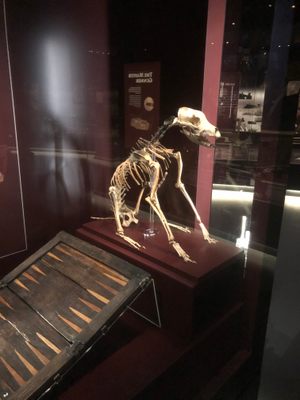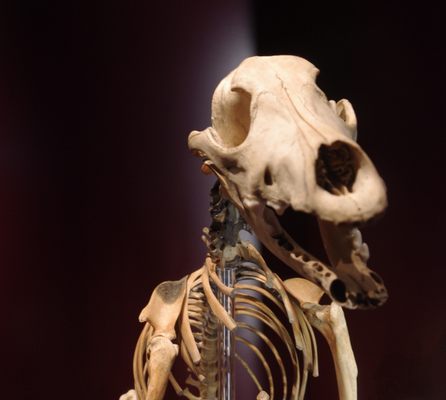About
In 1981, during the underwater excavation of the Tudor warship the Mary Rose, divers discovered the incredibly well-preserved skeleton of the ship's dog. When the Mary Rose sank in 1545, the pup died, along with many of the ship’s crew. The cause of the sinking remains a mystery.
Because the skeleton was found near the entrance of the ship carpenter’s cabin, a sliding hatch door, the research team named him Hatch. Some have claimed that the dog passed away while trapped in this entry, but a more likely case is once sunk to the ocean floor, scavenging sea creatures pulled Hatch into the space he was ultimately found.
Hatch served as the Mary Rose’s ratter, catching rodents that may have hitched a ride on the ship. Although we now commonly think of cats as the reapers of rodents, it was considered bad luck in seafaring if a cat was aboard a ship. And after Pope Innocent VIII declared that felines were unholy and the companions of witches in 1484, they were even less likely to be brought on board. Even disregarding superstition, dogs were likely the best qualified, as many rats are too large for a cat to capture and kill. Hatch seems to have done his job well—no complete rat skeletons were found during excavations of the Mary Rose.
Despite the fact that Hatch was not a cat, he was thought to be another bad luck omen for many years. From the size and shape of Hatch’s bones, experts had determined that they were examining a female dog. This would have made Hatch the only female aboard, and a ship was said to be cursed if it took on female crew. But recent DNA analysis on Hatch’s teeth has revealed that Hatch was in fact male, and likely no older than two years old. Further analysis of his bones indicated he spent most of his short life aboard the Mary Rose, perhaps taking a rare walk along the docks of Portsmouth.
This same analysis revealed that he likely had a long and curly brown coat. It was noted that he likely resembled a cross between a type of terrier and whippet, much like modern lurchers. As well as revealing more about Hatch, who has become one of the most popular exhibits at The Mary Rose Museum, this research is considered a great leap in forensic studies and our understanding of the development of dog breeds.
Related Tags
Know Before You Go
You can find hours and ticket information on the museum website.
Published
June 16, 2020
Sources
- https://www.medievalists.net/2013/10/why-cats-were-hated-in-medieval-europe/
- https://maryrose.org/hatch/
- https://www.independent.co.uk/news/science/scientists-prove-ships-dog-on-the-doomed-mary-rose-was-male-9804317.html?amp
- https://en.m.wikipedia.org/wiki/Mary_Rose#Hatch
- https://www.culture24.org.uk/history-and-heritage/military-history/art77001
- www.dogcastradio.com/blog/23691_hatchs-story.htm






























